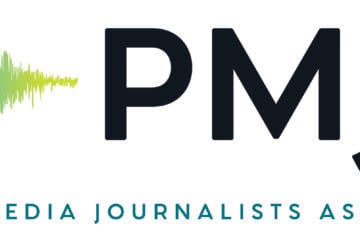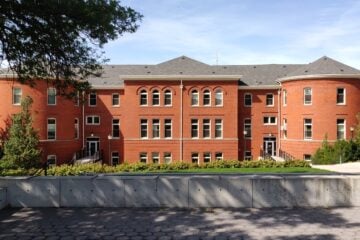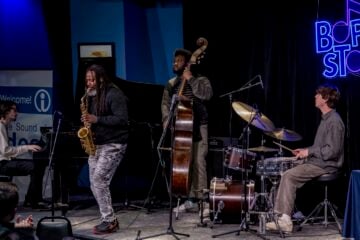Stations plan for staying on air with remote staff
Public radio managers around the country are implementing measures to keep their signals on the air and staffers safe as they face the possibility of extended disruption to operations from the coronavirus pandemic.
For many stations, precautions as of Friday were at a moderate level. Volunteer duties have been restricted or cancelled at some stations, and visitors to buildings are being restricted.
“We have asked all staff that can work from home to do so,” said Lowell Kiesow, chief engineer of KNKX in Tacoma, which is near one of the early centers of the outbreak in western Washington state. Some stations are making more extensive plans to rearrange operations. At KQED in San Francisco, chief engineer Larry Wood has been training news staffers to work from home if necessary, deploying a dozen portable Comrex Access units. The small mixer/codecs enable reporters and hosts to broadcast remotely from home studios through an internet connection should station studios become inaccessible.
“One news/talk show host has been operating from home on and off for months now, so our operators and news producers have already worked out how to make remote host operation work,” Wood said.
While working from home is optional for KQED staffers, other stations are preparing for the possibility of mandatory closures. At Colorado Public Radio, almost all staffers worked from home Friday, conducting an operational drill to determine whether the network’s systems could support the load of a completely off-site staff, said Jodi Gersh, SVP for marketing and engagement.
Preparing for an off-site reality
At some stations, total off-site operation is moving much faster. WAMU in Washington, D.C., plans to close its offices entirely by the end of next week and have all staffers working from home. That includes not only news reporters but also live program hosts during Morning Edition and All Things Considered, as well as the teams that produce the nationally syndicated 1A and the local Kojo Nnamdi Show.
WAMU Senior Director of Technology Rob Bertrand said he began planning for the move Feb. 26, “when it was clear that we were going to have a real impact that we were going to need to mitigate.” By Feb. 28, Bertrand said, he’d begun ordering equipment from suppliers, hoping to get ahead of possible shortages.
Even a few years ago, Bertrand says, it would have been impossible to imagine working totally from remote locations without at least a live board operator in the studio. Today, however, WAMU can deploy Comrex Access and Tieline VIA remote units to provide audio from wherever reporters and hosts work. The station’s Wide Orbit automation system can be controlled from anywhere with an internet connection. Most critically, the Axia consoles in the studios also have remote capabilities.
“We want to have people just come in to do their show and leave.”
Sherry Kennedy Brownrigg, assistant GM, KVNO
“We’ll still be using our mixers that are in the studio,” Bertrand said, “but we’ll be controlling them via a virtual surface, remotely.” It’s not a perfect system — Bertrand said remote-controlling the system may come with lag time that could make transitions between segments a little looser. But it’s still something worth trying, he said.
“Even three years ago, I don’t know that we would voluntarily have tried to do this, but we have the technology and the need, and we’re marrying those,” he said.
While working to move even essential staffers off-site, WAMU had already begun encouraging most staffers to begin working from home. Even news reporters who would ordinarily be in the field conducting face-to-face interviews are being asked to consider doing interviews over the phone or by internet.
The station’s Telos VX digital phone system allow for routing calls to remote locations, while its talk shows have already moved away from taking many live calls. 1A in particular is using Radio Voodoo software to allow callers to leave voice messages that are played back as part of the show.
With extra equipment on order and training underway, “we’re not asking questions right now” as far as the cost of the off-site move, Bertrand said. “None of us knows how long this situation will continue, so we’re trying to put the most robust solutions forward while still being respectful of the budget,” he said.
A comfort in troubled times
A thousand miles to the west in Omaha, Neb., KVNO is making plans to continue broadcasting classical music to listeners in Nebraska and Iowa.
The station was already well prepared for the possibility that announcers might not be able to access the station’s studios at the University of Nebraska Omaha, Assistant GM Sherry Kennedy Brownrigg said.
“Many of our announcers are classical musicians, so they already had provisions that we had made for them so that while they were on the road, they could still do their work,” she said.
The university has cancelled in-person classes but had not closed its buildings as of Friday, allowing KVNO to continue operations relatively uninterrupted. “We want to have people just come in to do their show and leave,” Kennedy Brownrigg said, reducing the possibility of exposure as much as possible. The station has limited access to its live on-air studio to just one announcer, morning host Otis XII, while other hosts are tracking their shows from a different studio in the building.
If announcers are forced off campus entirely, KVNO has made backup plans for staffing, with part-time announcers ready to fill in should full-time staffers get too sick to work. The station has purchased additional equipment for home studios for announcers not already equipped. Its RCS Nexgen automation system has been easy to learn for remote voice tracking, Kennedy Brownrigg said, and a backup is even in place should the station’s operations manager become ill and unable to update automation playlists.
As KVNO plans for the possibility of up to a 40% infection rate in Omaha, one plan remains uncertain: The station’s next on-air membership drive was scheduled for March 31 to April 9. Kennedy Brownrigg said that as of Thursday, no decision had been made on whether to go on with the drive.
“Do you have enough staff to be able to do this?” she asked, noting that KVNO uses only university faculty and staff as volunteers to answer its phones during the drive. “Is anybody going to want to come in, and are we better off postponing it?”
There’s also a public relations consideration to trying to raise money during a national crisis, she said. “I think we really need to be respectful of that,” she said. “It’s a tough decision.”
Whether or not it postpones its drive, KVNO will still play an essential role in its community, Kennedy Brownrigg said. As an all-classical station, “we’re quite content to be the station that people tune to to really feel at peace, to say, ‘There’s a companion for me … What I need right now is to relax,’ and that’s where we come in,” she said.





